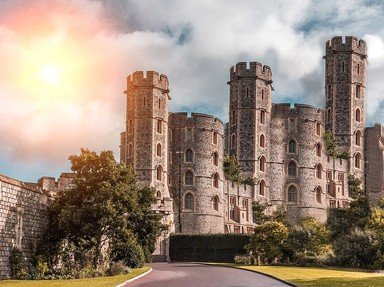Quiz Answer Key and Fun Facts
1. It is surprising to some visitors to learn that the Tower of London contains a functioning barrack building. Which great British military leader gave these barracks their name, a name taken from his greatest victory and the final battle of the Napoleonic Wars in 1815?
2. In 1674 a group of builders carrying out maintenance work close to the 'White Tower' uncovered two small skeletons secreted at the base of an old staircase. According to legend, who were these skeletons believed to have been the remains of?
3. Is the following statement true or false? During its long history, the Tower of London has been the home to the 'Royal Menagerie', the name given to the English monarch's private zoo.
4. What distinction does the German national Josef Jakobs hold in the history of the Tower of London?
5. By the middle of the 19th century, the moat that surrounds the Tower of London had been drained and filled after becoming an increasing hazard to the health of the local population. To what very important purpose was the moat that surrounds the Tower of London put to during World War II?
6. Just to the front of the Chapel Royal of Saint Peter Ad Vincula, between the chapel and the 'Queen's House', is a small grassed area which is now home to a brand new memorial dedicated to whom?
7. Immediately outside the Tower of London is the infamous Tower Hill. For what activity, of which one hundred and twelve took place over four hundred years, is this site infamous?
8. The Royal Armouries, part of which are housed in the White Tower, contain one of the finest collections of arms and armour to be found anywhere in the world. Many people are familiar with the term a 'suit of armour', but what was the term used during the medieval period for such an assemblage?
9. Deep underground and protected by a massive, solid steel door, believed to be resistant to a nuclear strike, is the vault that contains the priceless British crown jewels. The highlight of any visit here is a view of a number of royal crowns, but which of the following is the crown used at the coronation of the British monarch?
10. No quiz about a site as historical as the Tower of London would be complete without a question about a ghost. The spirit of whom is believed to be in residence and haunting the 'Queen's House', the home to the Constable of the Tower of London and their family?
Source: Author
SisterSeagull
This quiz was reviewed by FunTrivia editor
stedman before going online.
Any errors found in FunTrivia content are routinely corrected through our feedback system.

